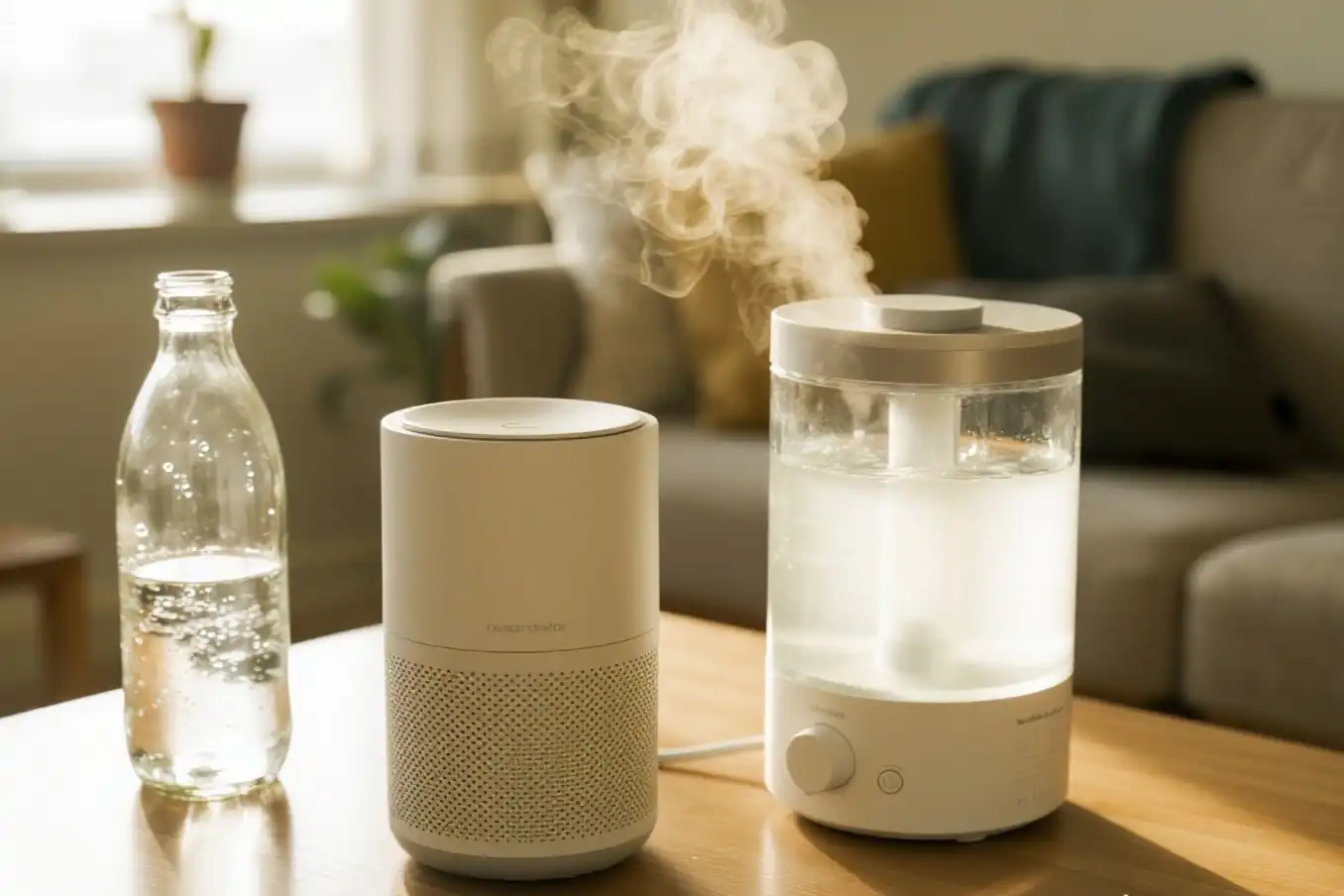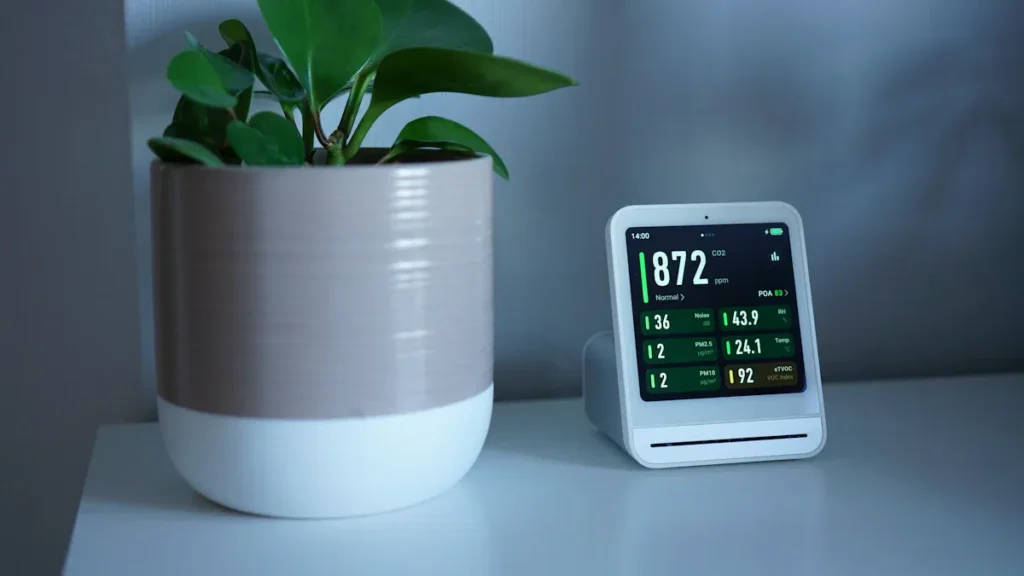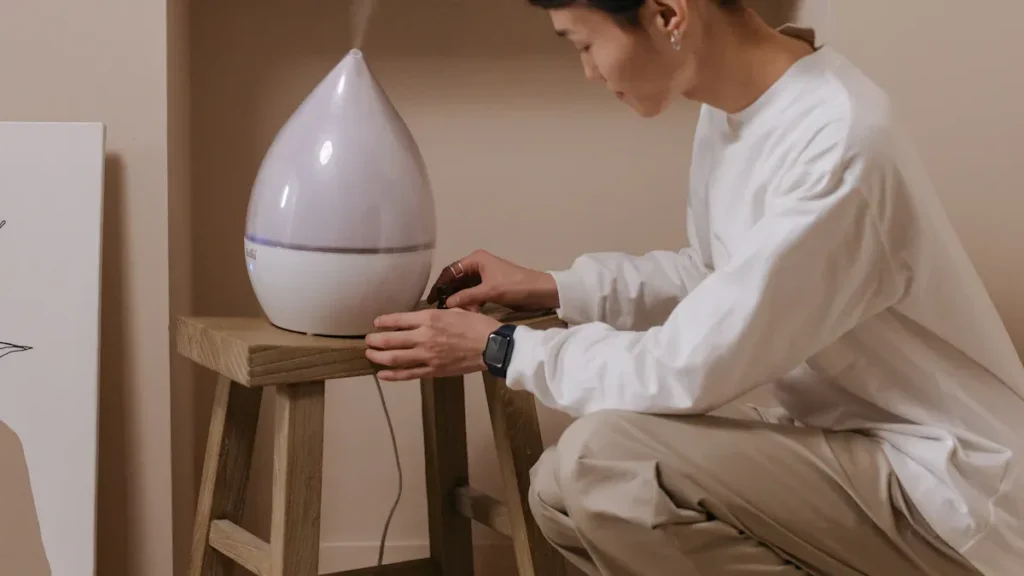
You might ask if a humidifier changes how an air purifier works. Research shows you can use both devices at the same time. Using a humidifier and an air purifier together helps with dry air and allergies. But there are some problems you should know about. These problems include mineral dust from tap water. Filters can get clogged faster. Sensors might not read air quality right. To get the best results, follow some easy best practices.
Key Takeaways
- Using a humidifier and air purifier together can make air better and more comfortable. You need to use them carefully to stop any problems.
- Use distilled or purified water in your humidifier. This helps lower mineral dust. It also keeps your air purifier filters clean for a longer time.
- Put your humidifier and air purifier on different sides of the room. Leave space around each one. This stops moisture from hurting filters and sensors.
- Keep humidity between 30% and 50%. This stops mold from growing. It also helps both devices work well.
- Clean your humidifier and air purifier often. This keeps the air good and helps your devices last longer.
Device Basics

Humidifier Function
A humidifier puts water into the air in your house. It helps keep the air from getting too dry. This makes you feel better and keeps you healthy. Dry air can make your skin dry and your eyes itchy. It can also give you a sore throat. A humidifier can help stop these problems. It also keeps your furniture and house safe from dry air damage. Some humidifiers work with your HVAC system. They use a humidistat to keep humidity between 30% and 50%.
Here are some main things a humidifier does:
- Keeps the air in your house at a good humidity.
- Helps stop dry skin and breathing issues.
- Protects wood floors and furniture from breaking.
- Lowers the chance of mold and mildew by controlling water in the air.
- Helps your HVAC system work better and not as hard.
There are different kinds of humidifiers. Each kind works in its own way:
| Humidifier Type | Mechanism Description | Operational Characteristics |
|---|---|---|
| Wicking | Air goes through a wet wick to add water. | Needs new filters; can be loud. |
| Steam | Heats water to make steam. | Uses power; can get very hot. |
| Cool Mist | Blows cool mist with a fan. | Safe to touch; can make things damp. |
| Ultrasonic | Shakes water to make a fine mist. | Very quiet; may leave white dust if you use tap water. |
Air Purifier Function
An air purifier makes the air cleaner by taking out bad stuff. It helps remove dust, pollen, mold, and some chemicals. Air purifiers use filters like HEPA filters to catch tiny things. These filters trap things as small as 0.3 microns. They catch dust, pet hair, and some germs. Air purifiers help people with allergies or asthma breathe better.
Air purifiers help with these common things in the air:
- Particulate matter (PM2.5 and PM10)
- Mold spores
- Pollen
- Formaldehyde
- Volatile Organic Compounds (VOCs)
Key Differences
You might want to know how these two devices are not the same. Here is a simple table to show the main ways they are different:
| Aspect | Air Purifier | Humidifier |
|---|---|---|
| Main Function | Takes out dust, allergens, and chemicals from the air. | Puts water in the air to stop dryness. |
| Air Quality | Cleans air by catching bad things. | Does not clean air but helps dust fall down. |
| Humidity Effect | Does not change how wet the air is. | Makes the air wetter; too much can cause mold. |
| Health Impact | Helps with allergies and asthma. | Helps with dry skin and breathing; too much can make allergies worse. |
| Maintenance | Needs new filters and cleaning. | Needs cleaning often to stop mold and germs. |
Tip: You can use both devices at the same time, but you should know how each one works to get the best results.
Humidifier Effects

Mineral Dust
If you use an ultrasonic humidifier with tap water, it does more than add water to the air. The humidifier shakes the water and turns it into a mist. This mist has minerals and metals from the water in it. These tiny pieces are called mineral dust or white dust. You might see this dust on your furniture or floating in the air.
Did you know? The mineral dust from a humidifier can have calcium, magnesium, sodium, and even small amounts of metals like lead and manganese. These minerals come from the tap water you put in the humidifier.
| Mineral | Amount in Dust from Tap Water Humidifiers |
|---|---|
| Calcium | Large quantities |
| Magnesium | Significant amounts |
| Sodium | Significant amounts |
| Chloride | Significant amounts |
| Fluoride | Smaller quantities |
| Nitrate | Smaller quantities |
| Phosphate | Smaller quantities |
| Sulfate | Smaller quantities |
| Aluminum | Trace amounts |
| Copper | Trace amounts |
| Iron | Trace amounts |
Breathing in these tiny pieces can bother your lungs. Kids, older people, and those with asthma or allergies are at higher risk. Some metals, like manganese, can cause health problems if you breathe them in for a long time. You can lower this risk by using distilled water and cleaning your humidifier often.
Filter Clogging
When you use a humidifier, the air gets wetter. This extra water can change how your air purifier works. The filters in your air purifier catch dust, pollen, and other things. If the air is wetter, some dust sticks together and gets caught faster. This can make the filter clog sooner than usual.
- Humidity helps some dust stick to the filter, but too much water can cause trouble.
- If the air is very wet, water can cover the filter fibers. This can trap more dust and make the filter clog quickly.
- Some filters work best at certain humidity, but high humidity above 80% can make clogging happen fast, especially with salty dust.
Mold likes wet places. If your air purifier filter stays wet too long, mold can grow. Mold on filters can make the air smell bad and send spores back into your room. Keeping humidity between 30% and 50% helps stop mold from growing on your filters.
Sensor Issues
Air purifiers use sensors to check the air. These sensors look for dust, smoke, and humidity. When you use a humidifier, the extra water in the air can confuse the sensors.
- Some sensors, like the DHT22, do not work right if humidity goes over 80%. They might get stuck or stop working.
- Water drops from the humidifier can make sensors think there is more dust or pollution than there really is.
- Water on the sensors can break them and make them give wrong numbers.
- Better sensors, like the SHT3X series, handle high humidity better, but even these can wear out after a while.
Tip: Put your humidifier and air purifier far apart. This helps keep the sensors dry and both devices working well.
Best Practices
Placement Tips
Think about where you put your humidifier and air purifier. Put them on different sides of the room. This keeps the mist away from the air purifier’s filters. Both devices will work better this way. Make sure there is space for air to move around each device. Do not put them near walls or in corners. Keep furniture away from them too. Try to leave 3 to 5 feet of space around your air purifier. Put your humidifier on a flat and raised spot. This helps spread the moisture and keeps your floor dry.
Tip: Placing your devices well stops water damage and helps the air purifier filter last longer.
Water Choice
The water you use in your humidifier is important. Tap water has minerals that can turn into white dust. This dust can land on your furniture and float in the air. Using distilled or purified water lowers the chance of mineral dust. Distilled water also helps your humidifier last longer. It keeps the inside clean and stops minerals from building up.
- Distilled water makes less white dust.
- Purified water helps stop minerals from building up.
- Clean water keeps the air better for you and your family.
Maintenance
Cleaning your devices often helps them work well. For your humidifier, empty and refill the tank with fresh water every day. Wipe the outside to stop germs from growing. Clean all parts that touch water two times a week. Once a week, take the humidifier apart and soak the pieces in vinegar or cleaner. Dry everything before putting it back together. Every month, check for damage and clean the heating or ultrasonic parts.
Check your air purifier filter every 6 to 8 months. Change it if it looks dirty or if the air smells bad. If you use both devices, you may need to check the filter more often. Watch for less airflow or more dust in the room.
Note: Too much humidity and not cleaning are common mistakes. Always check the humidity and keep both devices clean for the best air.
Using a humidifier and an air purifier together can help you feel better and stay healthy. But you need to make good choices to get the best results. If you use distilled water, there will be less mineral dust in the air. This also helps your air purifier filter stay clean longer. The chart below shows how the kind of water you use changes the number of tiny pieces in the air:
Keep your humidifier and air purifier far apart. Try to keep the humidity between 30% and 50%. This helps stop mold and keeps the air nice.
Action steps:
- Put distilled water in your humidifier.
- Clean your humidifier and air purifier a lot.
- Look at the filters and sensors often.
FAQ
What happens if you use tap water in your humidifier?
You create mineral dust in your home. This dust can float in the air and settle on furniture. Your air purifier must work harder to remove these particles. You may need to change filters more often.
What should you do if your air purifier filter clogs quickly?
You should check the humidity level in your room. Clean or replace the filter as needed. Try using distilled water in your humidifier. This helps reduce mineral dust and keeps your filter cleaner.
What can you do if your air purifier’s sensor gives wrong readings?
You can move your humidifier farther from your air purifier. Wipe the sensor gently with a dry cloth. Make sure the room does not get too humid. This helps the sensor work better.
What is the best way to place a humidifier and air purifier in the same room?
You should put them on opposite sides of the room. Leave space around each device. This setup helps both work well and keeps moisture away from the air purifier’s filter.
What signs show you need to clean your humidifier or air purifier?
You may notice a musty smell, less airflow, or more dust in the room. If you see white dust or mold, clean your devices right away. Regular cleaning keeps your air fresh.
See also
Do Air Purifiers Make a Difference for Dust Allergies
How Humidifiers Impact Dust and Cleanliness in Your Space
Are Air Purifiers Effective for Relieving Chronic Stuffy Nose
